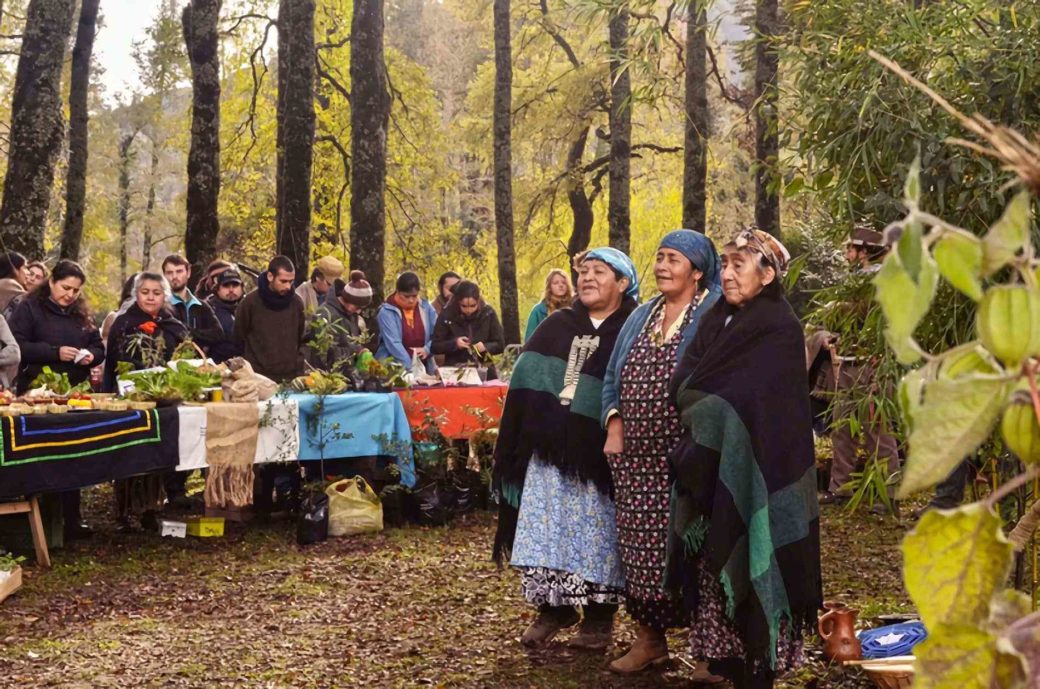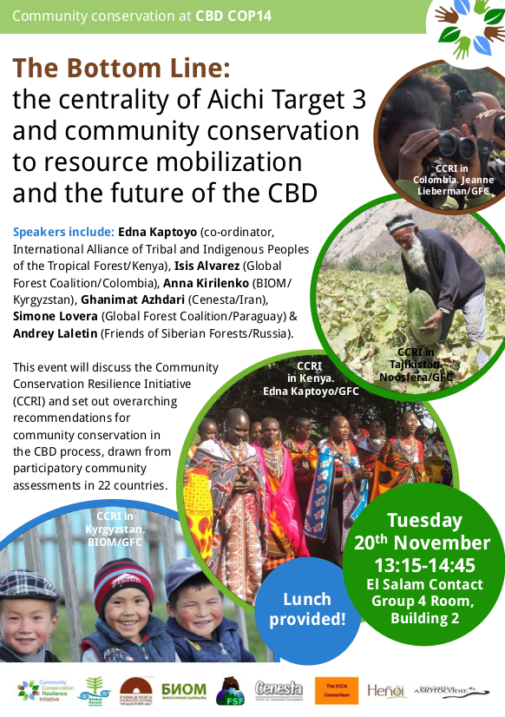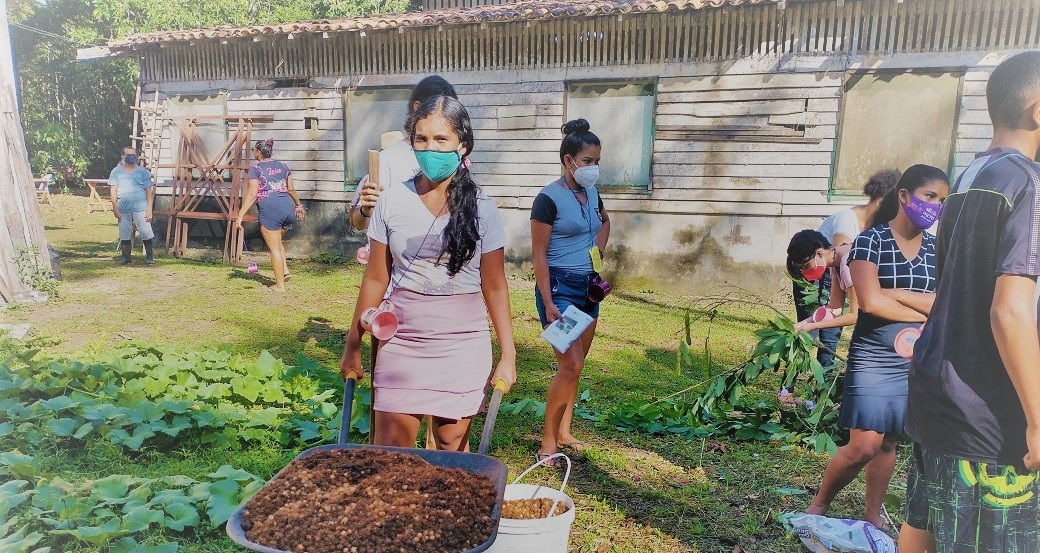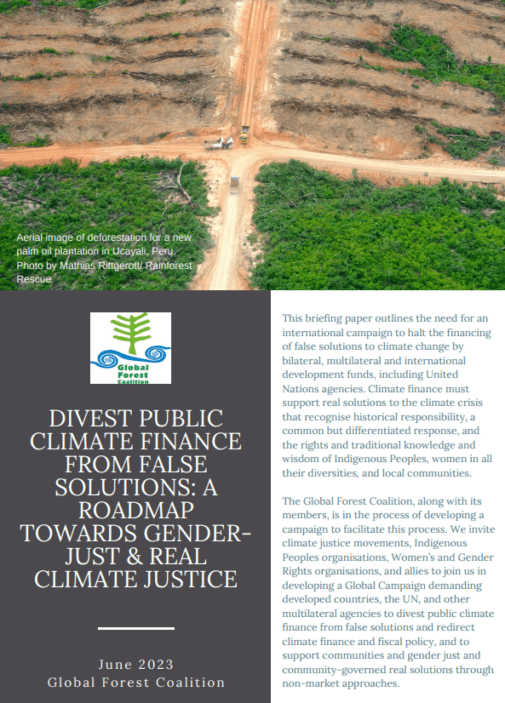The Bottom Line: The centrality of Aichi Target 3 and community conservation to resource mobilization and the future of the CBD

 This side event took place during CBD COP 14 in Sharm-El-Sheikh, Egypt, on November 20th, 2018. It was co-organised by the Global Forest Coalition, Friends of the Siberian Forests, BIOM, CENESTA and IIN.
This side event took place during CBD COP 14 in Sharm-El-Sheikh, Egypt, on November 20th, 2018. It was co-organised by the Global Forest Coalition, Friends of the Siberian Forests, BIOM, CENESTA and IIN.
The event was facilitated by Andrey Laletin,Friends of Siberian Forests (Russia), who introduced the main results from the Community Conservation Resilience Initiative (CCRI), and described how a lack of appropriate support harms positive community conservation initiatives. Andrey highlighted how many threats to community conservation are actually caused by government subsidies and other harmful incentives, which is recognised in Aichi Target 3. The target aims at “phasing out or reforming subsidies and incentives that are harmful to biodiversity by 2020”.
Speakers presented case studies showing positive and negative incentives that impact biodiversity and people’s livelihoods worldwide.
Helena Paul, Econexus (UK), started with a presentation that described EU incentives in the agricultural sector, mainly for agrofuels and agro-energy monocultures. She explained the harmful social and environmental impacts that this industry, driven by a handful of transnational corporations, has had in the global South for the ‘benefit’ of the global North.
The next speaker, Isis Alvarez, Global Forest Coalition (Colombia), explained how direct and indirect incentives and subsidies for the livestock sector in Mercosur countries are detrimental to biodiversity, people and their livelihoods, based on the information presented in GFC’s latest briefing paper, ‘Incentivising deforestation for livestock products’.
Anna Kirilenko, BIOM (Kyrgystan), presented the different (both negative and positive) incentives for biodiversity in Kyrgystan as well as some of the results from the CCRI assessment that took place there. She focused on examples of positive incentives that have positively impacted community forest restoration work, such as improving water quality, biodiversity conservation, traditional knowledge, and others. The importance of appropriate support for such community initiatives was stressed.
Edna Kaptoyo, Indigenous Information Network (Kenya), presented results from the CCRI in Kenya and described the positive practices carried out by the communities themselves, in their efforts to conserve and restore ecosystems. She highlighted the importance of providing appropriate support in the legal, political, socio-economic, and financial spheres, as well as the technical assessment and capacity-building support that could be provided to sustain and strengthen these initiatives.
Finally, Ghanimat Azh, CENESTA (Iran), talked about the Recognition of ICCAs (aka Territories of Life) as a positive incentive to achieving Aichi Target 3. She depicted positive ‘steps’ that could be taken in order to eradicate poverty and achieve community conservation, based on CCRI results from different indigenous communities in Iran (the Albohassani and the Farrokh-vand Tribe).
Original description of the event:
Community conservation is at the heart of the Convention on Biodiversity (CBD). Through many COP decisions, Parties to the CBD have frequently acknowledged that the conservation initiatives by Indigenous Peoples, local communities and women on the ground are forms of collective action that contribute to resource mobilization and implementation of the CBD and should be recognized, and effectively supported. However, the Community Conservation Resilience Initiative, which has gathered the results of the participatory assessments of 68 communities in 22 different countries of the resilience of their own conservation initiatives, has revealed that these initiatives are under severe threat from subsidized industries and other incentive schemes that promote or otherwise enable the destruction of biodiversity, and rarely benefit from appropriate positive incentives for their local initiatives to conserve and restore biodiversity. This underscores the fact that the effective implementation of Aichi Target 3 on the redirection and elimination of perverse incentives and support for positive incentives is at the heart of the success of the CBD’s Strategic Plan. Yet, as we heard during SBI-2, only 3% of National Reports contain information suggesting that Target 3 is on track to be met in those countries. In fact, an overall analysis of NBSAPs underscores how much more work still remains to achieve this Target and the agreed milestones to achieve the elimination, phasing out or reform of incentives that are harmful to biodiversity by 2020.
Therefore, in line with decision CBD/SBI/XIII/20 (para. 23) on reporting progress in achieving the milestones for the full implementation of AT3, the Global Forest Coalition and partners will present specific cases of incentives that have proven to be harmful for biodiversity and community conservation initiatives, and that should be phased out, eliminated or redirected. At the same time, we present the results of the Community Conservation Resilience Initiative (CCRI), which will show how Indigenous Peoples’ and Local Communities’ conservation initiatives, including protected and conserved territories and areas, can be boosted with appropriate positive incentive measures and other forms of support. Non-monetary incentives such as legal recognition and protection of their territories and areas and other community conservation initiatives are useful tools that could help bring opportunities for accelerating and scaling up the implementation of the Strategic Plan and Aichi Targets.
As long as scarce public funds are spent on incentives that are harmful for biodiversity, we will continue to lose biodiversity and the effects of any positive incentives will likely be significantly undermined or even negated. Conversely, redirecting public funds from harmful incentives toward positive incentives would contribute hugely to much-needed resource mobilisation (Aichi Target 20) and also avoid the negative impacts caused by such harmful incentives. All forms of incentives should be co-developed with the Indigenous peoples and communities concerned and subject to their free, prior and informed consent.








